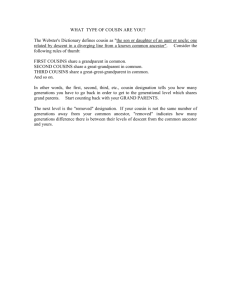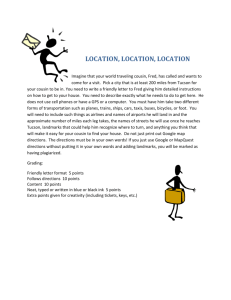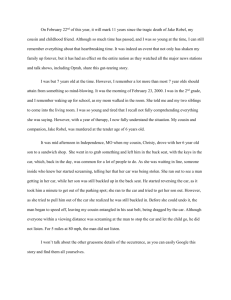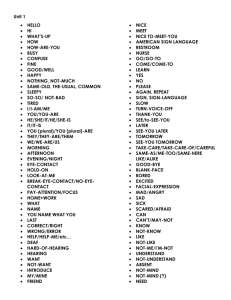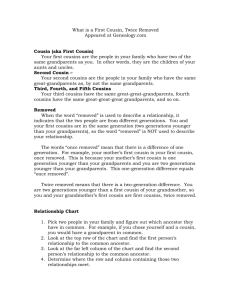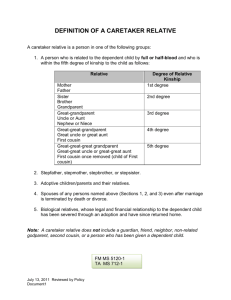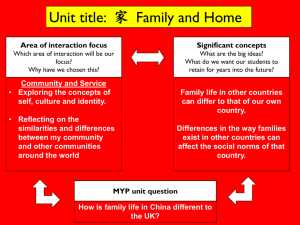GENEALOGICAL TERMINOLOGY
advertisement
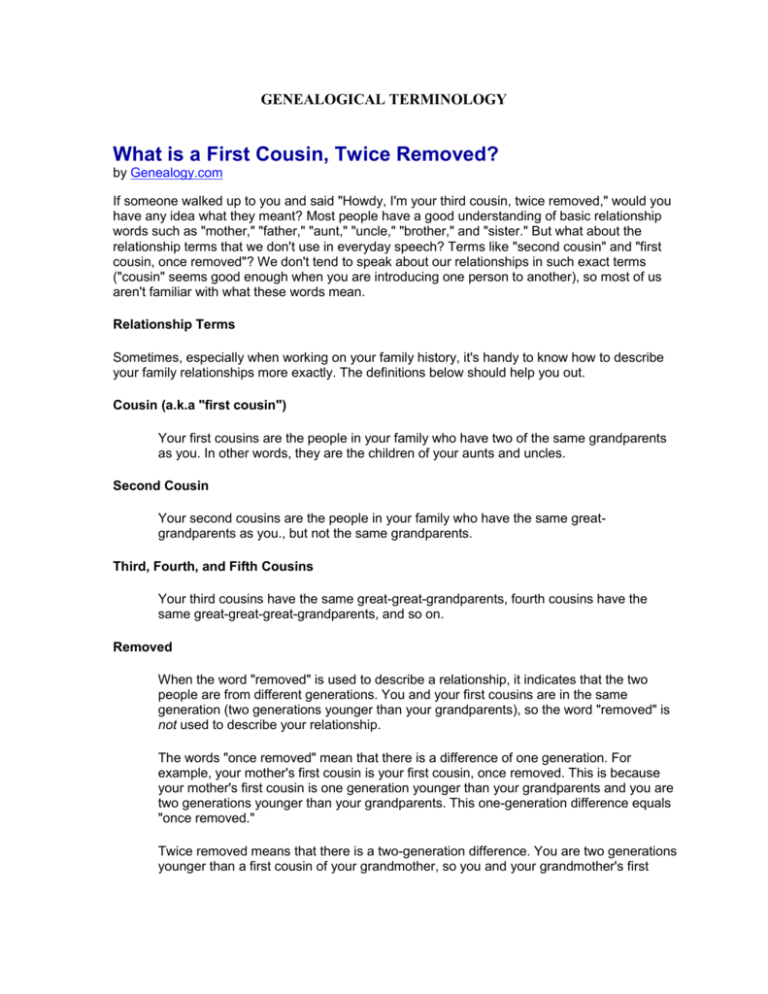
GENEALOGICAL TERMINOLOGY What is a First Cousin, Twice Removed? by Genealogy.com If someone walked up to you and said "Howdy, I'm your third cousin, twice removed," would you have any idea what they meant? Most people have a good understanding of basic relationship words such as "mother," "father," "aunt," "uncle," "brother," and "sister." But what about the relationship terms that we don't use in everyday speech? Terms like "second cousin" and "first cousin, once removed"? We don't tend to speak about our relationships in such exact terms ("cousin" seems good enough when you are introducing one person to another), so most of us aren't familiar with what these words mean. Relationship Terms Sometimes, especially when working on your family history, it's handy to know how to describe your family relationships more exactly. The definitions below should help you out. Cousin (a.k.a "first cousin") Your first cousins are the people in your family who have two of the same grandparents as you. In other words, they are the children of your aunts and uncles. Second Cousin Your second cousins are the people in your family who have the same greatgrandparents as you., but not the same grandparents. Third, Fourth, and Fifth Cousins Your third cousins have the same great-great-grandparents, fourth cousins have the same great-great-great-grandparents, and so on. Removed When the word "removed" is used to describe a relationship, it indicates that the two people are from different generations. You and your first cousins are in the same generation (two generations younger than your grandparents), so the word "removed" is not used to describe your relationship. The words "once removed" mean that there is a difference of one generation. For example, your mother's first cousin is your first cousin, once removed. This is because your mother's first cousin is one generation younger than your grandparents and you are two generations younger than your grandparents. This one-generation difference equals "once removed." Twice removed means that there is a two-generation difference. You are two generations younger than a first cousin of your grandmother, so you and your grandmother's first cousin are first cousins, twice removed. Relationship Charts Simplify Everything Now that you have an idea of what these different words mean, take a look at the chart below. It's called a relationship chart, and it can help you figure out how different people in your family are related. It's much simpler than it looks, just follow the instructions. Instructions for Using a Relationship Chart 1. Pick two people in your family and figure out which ancestor they have in common. For example, if you chose yourself and a cousin, you would have a grandparent in common. 2. Look at the top row of the chart and find the first person's relationship to the common ancestor. 3. Look at the far left column of the chart and find the second person's relationship to the common ancestor. 4. Determine where the row and column containing those two relationships meet. Common Ancestor Child Grandchild G-grandchild G-g-grandchild Child Sister or Brother Nephew or Niece Grand-nephew or niece G-grandnephew or niece Grandchild Nephew or Niece First cousin First cousin, once removed First cousin, twice removed Ggrandchild Grandnephew or niece First cousin, once removed Second cousin Second cousin, once removed G-ggrandchild G-grandnephew or niece First cousin, Second cousin, twice removed once removed Third cousin Just When You Thought You Had it When you are working with older records, be aware that the meaning of the word "cousin," along with the meanings of other relationship terms, have changed over time. The Glossary section of the Learning Center can help you with any confusing relationship terms, including those in Latin. About the Author This article was written by Genealogy.com staff.
